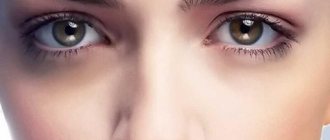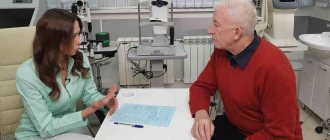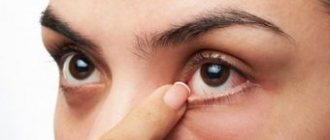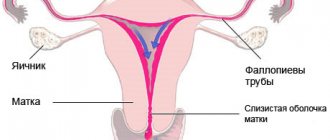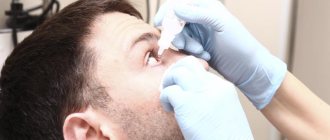People often confuse dark circles with bags under the eyes, mixing these fundamentally different problems into one.
Bags under the eyes are formed due to the redistribution of so-called fat bags (hernias). Sometimes bags are formed due to ptosis of the skin in the lower eyelid area (read more about the formation of bags under the eyes).
Dark circles (bruises) under the eyes, on the contrary, appear when there is a deficiency of fat in the eyelid area. The cause may be associated with genetic, pathological and age-related factors. In the latter case, the problem is combined - the person develops both bruises and bags under the eyes.
It is important to understand that there is not only one reason for the appearance of circles under the eyes - it is almost always a complex of reasons.
15% discount on the first visit for any procedure with any doctor!
Let's take a look at the anatomical structure of the eye area.
To understand the reason for the formation of circles, you need to imagine the structure of this area. Let's remember our school anatomy lessons.
Under the skin there is fat hidden - the so-called “fat packets of the face”. Below them are the orbicularis oculi muscles: they are responsible for squinting, squinting, blinking and other facial expressions.
Let's pay attention to the orbit of the eye and remember how many blood vessels and capillaries there are in this area.
It is very important to understand that blood vessels and muscle tissue are rather “dark” formations that are not very visible “on the face” only thanks to the skin and subcutaneous fat that cover these structures. Thus, skin and fat are the main concealers of dark circles under the eyes.
Thinning of the fat layer
The most common cause of dark circles. The skin of the lower eyelids is separated from the orbicularis oculi muscle and blood vessels by a thin layer of superficial fat.
With age, the superficial fat becomes thinner, “goes away,” and even through the thickest skin the orbicularis oculi muscle and blood vessels begin to show through. The muscle is dark red, the vessels are blue-scarlet.
The color of the circles depends on what is more visible - the blood vessels or the muscle. The color of dark circles has no connection with the kidneys, liver and other organs.
It happens that there is very little subcutaneous fat - this is a genetic feature. Then dark circles and semicircles can be seen from childhood.
Thin skin
The skin of the lower eyelids is the thinnest on the entire body. There is a thin layer of fat under the skin, but if there is little fat and the skin is thin, then the same vessels and muscles can be seen through the light. If your blood vessels are located close to the skin , and your skin is light, then it can show through even if there is fat!
Deep-set eyes
The lower eyelid is spatially located in the projection of the orbit of the skull. Anatomically deep-set eyes visually create a “retraction” of the skin relief in the area of the lower eyelid; when illuminated, a shadow part is formed in this area, which visually creates the effect of a dark circle.
To better understand this point, let's look at a visualization of another deficiency - the nasolacrimal trough depending on lighting.
Any age-related problem - be it a wrinkle, a bag, a hernia or bad skin - is noticeable thanks to only one thing: incident and reflected light.
The main essence of anti-aging aesthetic corrections is working with the distribution of light and shadow on our face. Any furrow, fold or bag is a play of light. Look at the illustrations to see how the visual appearance of the nasolacrimal trough varies depending on the direction of the lighting.
We all understand that both daytime natural and artificial light falls mainly on our face from above. It is this direction of lighting that most clearly emphasizes all the irregularities on the face!
It’s the same with deep-set eyes - the darkness of the lower eyelid depends to a greater extent on the lighting.
Dark circles from pigmented skin
Acquired and congenital pigment is the cause of the formation of dark circles in a normal anatomical structure. The peoples of the Caucasus region have a genetic predisposition to pigmented skin of the lower and upper eyelids.
Pigmentation can appear with age; usually such dark circles do not have a clear border at the bottom.
Skin hyperpigmentation
Thyrotoxicosis
16681 May 21
IMPORTANT!
The information in this section cannot be used for self-diagnosis and self-treatment.
In case of pain or other exacerbation of the disease, diagnostic tests should be prescribed only by the attending physician. To make a diagnosis and properly prescribe treatment, you should contact your doctor. Skin hyperpigmentation: causes of appearance, what diseases it occurs with, diagnosis and treatment methods.
Definition
Skin hyperpigmentation is an excess deposition of melanin pigment of varying location, shape and size, leading to changes in skin color of varying intensity.
The surface layer of the skin (epidermis) is a multilayered (five layers) epithelium. The largest number of melanocytes, the main function of which is the production of melanin, are located in the basal layer of the skin (basal membrane)
Thanks to melanin, the skin protects a person from ultraviolet and infrared radiation.
The formation of age spots largely depends on the condition of the basement membrane.
Types of skin hyperpigmentation
Based on
the mechanism of occurrence,
the following types of skin hyperpigmentation are distinguished:
- melanocytic - pigmentation occurs due to an increase in the number of melanocyte cells;
- melanin - pigmentation is caused by an increase in the production and accumulation of melanin or a decrease in the rate of renewal of the stratum corneum of the epidermis.
The accumulation of pigment can be limited
or
widespread
, caused by
physiological
or
pathological
reasons, the process can be primary or secondary.
Possible causes of skin hyperpigmentation
Scientists identify several main causes of skin hyperpigmentation:
- genetic predisposition;
- exposure to ultraviolet radiation (in isolation or in combination with other reasons);
- burns (thermal, chemical, electrical);
- inflammatory processes;
- infectious diseases, including parasitic ones;
- endocrine disorders;
- metabolic disorders;
- use of herbal substances and drugs with photosensitizing effects
freckles for people
(ephelides) are a striking example of a realized genetic predisposition, which is based on an increase in the formation of melanin.
What diseases cause skin hyperpigmentation?
The group of melanocytic pigmentations includes various types of lentigines
.
Simple lentigo occurs at any age as a single (or multiple) formation up to 5 mm in size, brown in color. Doesn't change over time.
For xeroderma pigmentosum
Lentigo occurs before the age of 2 years on areas of the skin exposed to the sun (face, neck, back of the hands), then spreads throughout the body. Often combined with keratosis - thickening and peeling of the skin.
Solar lentigo
Appears, as a rule, after 40 years of age on areas of the skin previously exposed to sunburn. They appear as spots ranging in size from 1 to 3 cm, their color can vary from light yellow to dark brown.
Lentigo reticularis
resembles a black blot and is considered a type of solar lentigo. Most often occurs in individuals with skin phototypes I and II who have a history of severe sunburn with blistering.
Less common are other types of lentigo, occurring in isolation under the influence of solarium lamps, drug therapy (PUVA lentigo) or as part of syndromes affecting other internal organs (for example, with Peutz-Jeghers syndrome, lentigo of the oral mucosa is combined with intestinal polyps).
Skin hyperpigmentation can occur due to hormonal imbalance.
For example, during pregnancy the level of estrogen increases, and against the background of exposure to ultraviolet radiation, chloasma can form - round spots of different sizes and colors on the face.
In the later stages of pregnancy, existing moles, freckles, nipples and areolas of the mammary glands, the white line of the abdomen, and the skin around the navel may darken. Chloasma is often observed in women taking hormonal contraceptives, as well as with inflammatory or tumor pathologies of the ovaries. Chloasma is rarely recorded in men - as a rule, they have an increased level of luteinizing hormone and a decreased level of testosterone.
Hyperpigmentation of the skin throughout the body with darker areas exposed to sunlight is seen in primary or secondary chronic adrenal insufficiency (Addison's disease or syndrome) due to low levels of the hormone cortisol.
As a result of excessive thyroid function (thyrotoxicosis), secondary adrenal insufficiency occurs, and pigmentation can be diffuse or limited in the form of chloasma.
In diseases accompanied by extreme exhaustion (cachexia), the skin of the neck, abdomen, and genitals turns dirty brown.
The pigment can accumulate in places of thermal, chemical or electrical burns, injuries with damage to the skin. The pigment often remains after resolved boils, carbuncles, urticaria, lichen planus, psoriasis, as well as after scabies and lice.
In Riehl's melanosis, a bluish-brown reticulate pigmentation appears on the back of the hands and forearms, and the same occurs when in contact with synthetic clothing, rubber products or hydrocarbons, enhanced by ultraviolet exposure.
Some plants (legumes, figs, parsley, citrus fruits) contain photosensitizing substances - psoralens.
When present in food, they increase the photosensitivity of the skin. Such plants can be included in cosmetics; if you apply them to the skin and then go out into the sun, hyperpigmentation will occur at the site of application. Some medications also have a photosensitizing effect: sulfonamides, tetracyclines, antipsychotics, etc. Taking cytostatics slows down the rate of epidermal renewal, so the pigment is removed more slowly.
Which doctors should I contact for hyperpigmentation?
If hyperpigmentation occurs, you should consult a dermatologist. If the examination reveals pathologies of internal organs, you may need to consult an endocrinologist, therapist, gynecologist, urologist and other specialists, and if there is a risk of malignancy of the process, an oncologist.
Diagnosis and examinations for skin hyperpigmentation
Diagnosis of hyperpigmentation is based on clinical examination and patient interviews.
If necessary, the doctor can remove a pigmented formation (for example, lentigo reticularis) followed by histological examination to confirm its benignity.
Hereditary causes of dark circles under the eyes
Heredity is a key player in the list of causes of dark circles under the eyes. But the concept of “heredity” itself is very broad.
Hereditary factors that provoke the formation of bruises under the eyes include:
- Specific facial anatomy (deep-set or slightly bulging eyes);
- Thin skin;
- Close location of blood vessels to the skin in the eyelid area;
- Constitutional features – excessively thin physique, in which there is a general deficiency of subcutaneous fat;
- Less commonly, chronic genetic diseases (for example, heart or liver).
Dark circles under the eyes associated with hereditary causes appear early - sometimes even in childhood. Indirectly, those bruises that arose in youth - before 20-25 years old (normally this does not happen) can be attributed to “heredity”. If parents develop dark circles at a young age, it is possible that the same fate will befall their child. And pathological “components” are not necessary for this.
Hereditary reasons can also include the properties of the skin : if the skin is thin, then the vascular network of the periorbital region “shines through” through it. This is usually the case for those with fair skin - dark circles can form as early as the age of 20, when fat packets begin to thin out.
It happens that hereditary factors are combined - a person has thin skin in the periorbital area and problems with blood circulation. The approach to such problems must also be comprehensive . Fortunately, in modern cosmetology there are fillers and other drugs that act at different levels: for example, the American MesoEyeC17 has a positive effect on the processes of blood and lymph microcirculation.
How to deal with hereditary causes?
As you understand, heredity can hardly be cured, so there is only one correction option - correcting the lower eyelid area with fillers (contour plastic methods). Even surgery won't change the situation much.
The cost of such a correction is from 15,000 rubles, the duration of the effect is up to 10-14 months.
Have you successfully passed this stage? It's time to embrace aesthetics
If you start looking at the world “through the eyes of a panda” almost every day, these simple and effective methods will definitely come in handy. 1/ Wash with cold water. Ideally, ice-cold mineral water with gas. By the way, this life hack is practiced by many famous cosmetologists - and for good reason: this technique also works great for general swelling of the face. So make it a rule to keep a couple of bottles of sparkling water in the refrigerator - and look at the world with wide open eyes. 2/ Normalize your sleep. Complete relaxation is not only an eight-hour rest, but also the correct position of the body in bed. When you sleep on your side or stomach, gravity pulls fluid into the under-eye area, which causes dark circles. Sleeping on your stomach with your face in the pillow is the same thing, only multiplied by two. So try to train yourself to sleep on your back. 3/ If you are tolerant of cold temperatures, (we like cosmetic ice cubes from Anne Semonin) or round quartz massagers to tone the periorbital area (that's the scientific name for the area around the eyes). until they are urgently needed. Five to ten minutes of simple self-massage will be quite enough. 4/ As we have already understood, physiology and hereditary predisposition are largely responsible for the tendency to edema. However, morning bags under the eyes often lead to a midnight meal and a glass or two of wine or beer. If swelling is a problem in your life, try to abstain from drinks, as well as salty and spicy foods several hours before bedtime . By the way, foods that promote fluid removal include watermelon, cucumber, celery and parsley. 5/ Special creams and serums quite easily remove dark circles if they appear due to lack of rest and abuse of cigarettes, coffee and alcohol. Such products mainly contain blood-accelerating ingredients: menthol or troxerutin/heparin. The latter ingredients are often the active ingredients in creams for varicose veins and common bruises (but check with a specialist before experimenting with them). Thanks to creams with these components, microcirculation is stimulated, the skin is saturated with oxygen and moisturized, which gradually removes all “darkening”. 6/ Choose products with caffeine to reduce puffiness under the eyes - it calms blood vessels and greatly helps remove excess fluid. 7/ As a weapon against bruising, use creams with a lightening effect for the periorbital area. However, keep in mind that such products should not be applied too close to the mucous membrane - they usually contain powerful active ingredients. 8/ Check your skincare: sometimes cream or gel for the skin around the eyes causes swelling due to allergies. If there is even the slightest suspicion that the swelling is associated with a new beauty product, do not use it for four to five days and see if there is a difference. 9/ Explore the tools from our shortlist : each of them works conscientiously and will literally help you look at the world with new eyes:
Age-related changes and dark circles under the eyes
The most common cause of dark circles is age-related changes.
Age-related changes in the eyelids occur according to an approximate “schedule”:
- 20-25 years – appearance of “crow’s feet”;
- 25-30 years – formation of a mild nasolacrimal groove;
- 35-40 years – appearance of dark circles under the eyes;
- 40-45 years – formation of fatty bags (hernias) of the lower eyelid;
- 45-50 years – growth of hernias (bags under the eyes);
- 45-55 years and beyond - ptosis of the upper and lower eyelids.
It is impossible to fit every person into this scheme - for some, age-related changes in the eyelids begin earlier, for others later. But there is an obvious fact: if you ignore professional care from the age of 30, the regression will be more rapid, and radical interventions will become relevant closer to the age of 40.
So, the main reason for the age-related manifestation of dark circles is the thinning of the fat packet of the lower eyelid and the weakening of the ligamentous apparatus.
The orbicularis oculi muscle and ligaments stretch and sag with age. Moreover, with age, the size of the orbit increases, and the zygomatic bone flattens.
The situation is aggravated by age-related slowdown of metabolic processes and lymphatic drainage in this area.
Combating impaired lymphatic drainage and redistribution of subcutaneous fat with the help of creams and ointments is frankly naive.
Even the most expensive cosmetics are not able to “resolve” fatty bags and redistribute the tissue evenly to compensate for its deficiency in areas with dark circles under the eyes - this is obvious. A good cream only serves as an addition to full-fledged procedures in aesthetic medicine, but will never replace them.
Age-related dark circles under the eyes are also often caused by impaired blood supply, so they are soon naturally supplemented by bags and puffiness. The stagnant processes themselves do not add beauty to the skin - it acquires looseness and an earthy tint - pigmentation.
Diagnostic features
It is necessary to visit a therapist and an ophthalmologist. Afterwards, clinical and laboratory tests are prescribed. If the results of the examination do not reveal any violations, then a repeat visual examination is carried out.
Diagnostic examination methods:
- general urine analysis;
- visual inspection;
- tests for sugar levels and blood biochemistry.
Additional diagnostic techniques may be required:
- biopsy;
- ultrasonography;
- radiography.
If there are no problems with sleep and sufficient rest, signs of fatigue should disappear. If this does not happen, then it is necessary to conduct a comprehensive examination of the entire body. Circles and wrinkles under the eyes often indicate serious vision problems or liver-related pathologies.
Bruises under the eyes due to illness, pigmentation.
Any pathological processes in the body have a bad effect on appearance. It is interesting that such aesthetic defects are the easiest to correct, but the problem is not solved at a global level. And a good cosmetologist (and a cosmetologist is a doctor) is obliged to warn the patient about this.
Increased skin pigmentation often occurs due to impaired functioning of melanocytes.
A simple example: due to liver disease, a patient develops so-called “liver spots”. “Suppressing” the activity of abnormally active melanocytes (cells that produce the pigment melanin) is an easy task for a cosmetologist. This can be done by the IPL method, vitamin meso-cocktails, additionally leveling the relief of the lower eyelid area with fillers. But will this make the liver healthier? No! This means that the problem will soon return, which will cause distrust in the cosmetologist and kill his authority in the eyes of a person. The same applies to heart, endocrine and other diseases.
Before dealing with external signs of illness, check and get your health in order. This will guarantee a successful and “long-lasting” facial transformation.
The list includes some of the diseases that cause dark circles under the eyes:
- Heart and kidney failure;
- Hypothyroidism;
- Adrenal dysfunction;
- Parasitic infestations;
- Cholelithiasis;
- Cholecystitis;
- Anemia;
- Vascular pathologies (circulatory disorders);
- Hepatitis and other liver diseases;
- Chronic intoxication;
- Hypovitaminosis.
Bruises under the eyes, caused by pathological processes in the body, usually do not appear spontaneously and are “chronic”.
Correction of the regime, rationalization of nutrition and other tricks are powerless against them. If you notice a similar problem along with specific symptoms, you should contact not only a cosmetologist, but also a therapist, and if you discover a disease, undergo appropriate treatment.
Regime and dark circles under the eyes
In adults, bruises under the eyes sometimes appear due to the most banal reason - violation of the regime.
Overwork, lack of sleep, stress - all this makes the skin of the eyelids thin and dull, and the face pale and haggard. Metabolism is disrupted, the blood vessels of the eyelids appear more prominently, creating characteristic purple or bluish shadows under the eyes. A similar problem arises due to persistent dehydration, when a person constantly stays in rooms with dry air and drinks little water (as well as smokes and abuses alcohol).
A healthy lifestyle is the best friend of cosmetic procedures. In tandem it works flawlessly!
Try a double tactic: sleep 8 hours a day, eat right, spend time in the fresh air more often, and at the same time visit a competent cosmetologist. And you won’t give dark circles under your eyes a single chance.
A consultation with our specialists is the answer to your remaining questions.
Telephone consultation is always free!
Leave your contact, we will tell you everything and offer a discount!
Send
